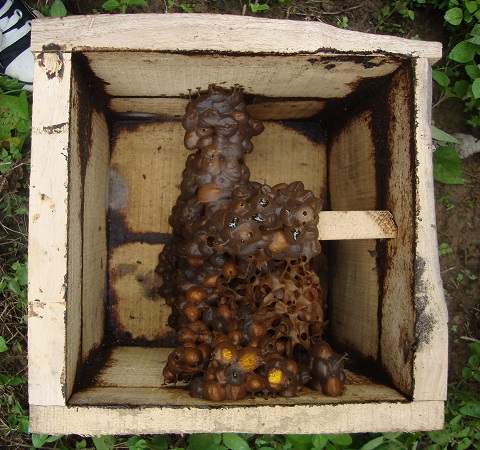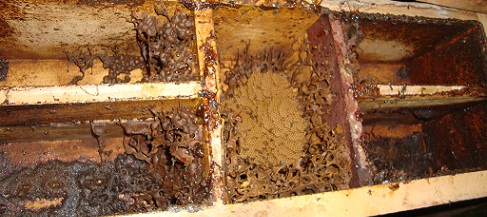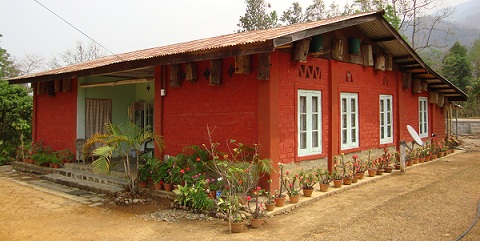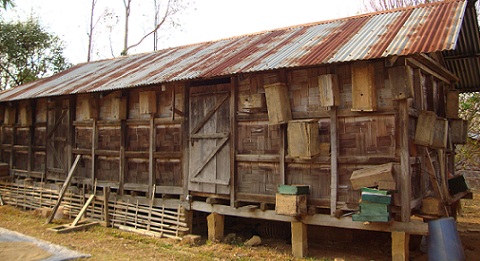Rearing of Stingless Bess in Nagaland
Introduction:
Nagaland has a tradition of beekeeping that extends back to many years. Native beekeepers in Nagaland practice both ‘apiculture’ and ‘meliponiculture, although, apiculture is found to be widely favored. ‘Meliponicullture’or simply ‘Stingless Beekeeping’ due to little or no domestication technology found only few enthusiast in Nagaland. Though the number of stingless beekeepers seems to be negligible, in some districts, the history of stingless beekeeping can be traced back to many generation past.
What is Stingless Bee?
‘Stingless bee’ belongs to the family Apidae and are closely related to the common honey bees, carpenter bees and bumblebees. They can be found in most tropical and sub-tropical regions of the world and its nesting habits are usually hollow trunks, tree branches, underground cavities or rock crevices. Nagas have been rearing these bees in hollow log hives for quite e a long time, though some beekeepers transfer then to wooden box as this makes it easier to control the hive.

Stingless bees are known to store their aromatic honey in clusters of small resin pots near the extremities of the nest and has a distinctive bush taste -a mix of sweet and sour which comes from plant resins used for building their hives of honey pot. This taste varies at different times of the year depending on the flowers and trees visited. Honey production of stingless bees is quite less compared to the commercial honeybees. Unlike a hive of commercial honeybees, which can produce 75 kg of honey a year, a hive of stingless bee produces about 1 kg of honey
Importance
The honey of stingless bees is known to have many Medicinal values and is used in treatment of wounds/injuries, burns, dysentery, cholera, cough, rheumatism. It is also used as a medicine in bites by snakes, spiders and poisonous insects. The wax of stingless bees is soft and easy to work and is used in making smaller works of art and blacksmithing. Stingless bees are generally flower visitors and important poIIinators of pants such as peach, pine, citronella, mangoes, strawberries, watermelons, citrus, avocados, litchi, plum, pears, banana, papaya, tomatoes. There are trees and scrubs which the other bees do not forage but is visited by the stingless bees.


Methods of rearing:
In Nagaland, stingless bees are found in almost all the districts. Many rear the bees in traditional log tree. They adopt the traditional method to gather the bees by first locating a wild hive, then the branch is cut around the hive to create a portable log. The log tree which has been cut is covered on both sides with a piece of wood and is sealed. Some beekeepers use bamboo as an extension of the hive for easy access to the honey and also for minimal damage to the hive. Some modern boxes are also being used for convenience of rearing, easy management of the hive and also for easy honey extraction.
Meliponiculture can be encouraged because it is an actively which can be undertaken by anyone as it is easy and takes minimal time and effort. Due to high content of medicinal value, stingless bee honey is sold at premium price and there is high demand everywhere. It can provide income and employment opportunity for people especially in rural areas and can be turned into a lucrative business.

